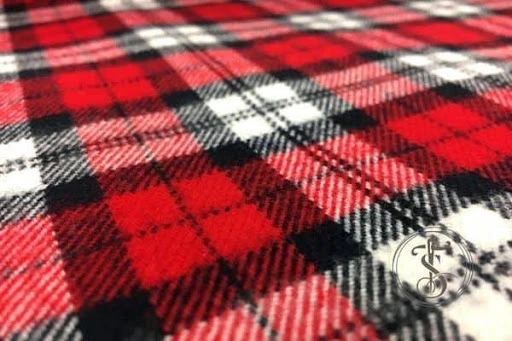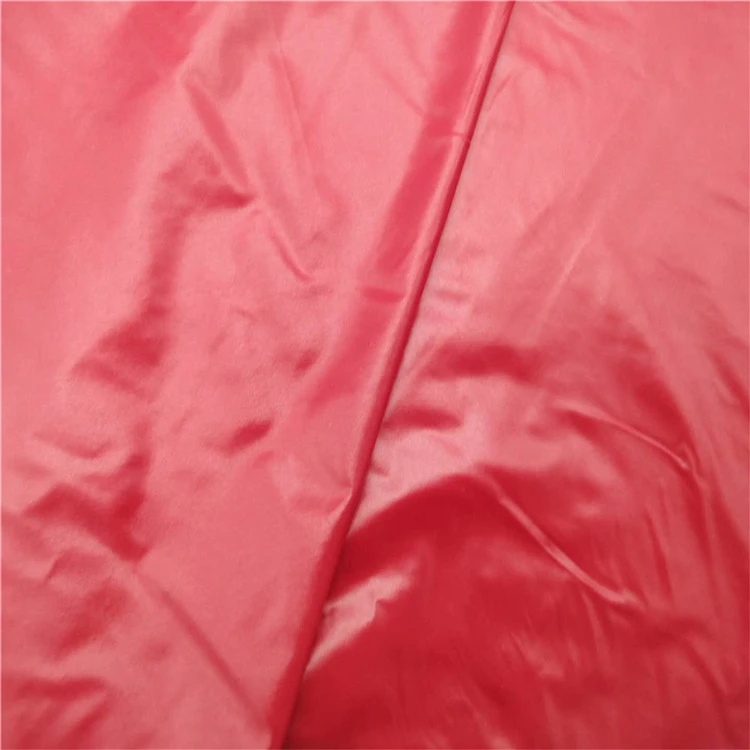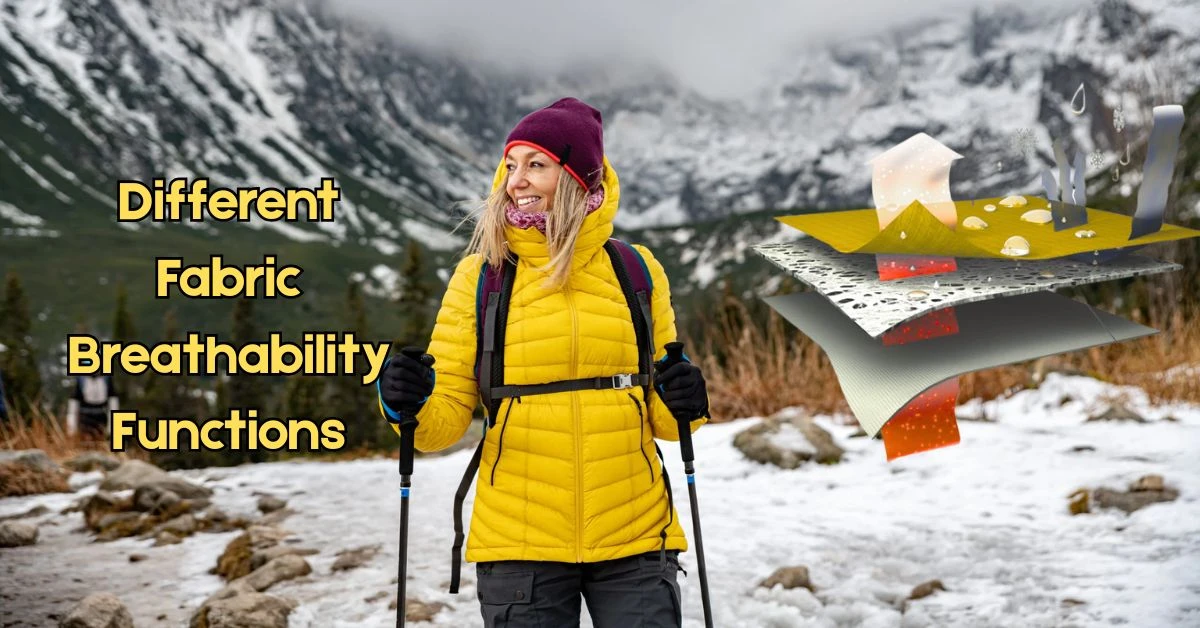Who does not want a fabric that keeps warm in a cold and breezy season? The flannel fabric has been ruling this clothing industry due to its comfort, softness, and stylish look. Find your favorite flannel fabric’s history, raw materials used, manufacturing process, types, and usage in this brief article.
Table Of Contents
- What is Flannel Fabric?
- What does Flannel Fabric Consist of?
- How Enriched was Flannel’s History?
- Manufacturing Process of Flannel Fabric
- Types of Flannel Fabric
- Flannel Fabric Properties
- Characteristics of Flannel Fabric
- How to Take Care of Flannel Fabric?
- Applications of Flannel Fabric
- FAQs
- Final Words
What is Flannel Fabric?

Flannel is a plain woven or twill yarn dyed check pattern fabric often made of cotton and wool with a brushed and hairy surface to give a feel of warmth and comfort. Any fabric made of cotton, wool, or synthetic that maintains softness, texture, and insulative material is well-known in the industry as the flannel fabric. As a thermal fabric, flannel is committed to ensuring super comfortability, brushed or non-brushed textures, and cold resistance. Sometimes, it consists of pure cotton and blended polyester.
What does Flannel Fabric Consist of?
The flannel fabric comprises wool, blended fiber, and synthetic polyester fiber. The napping technique provides flannel with a fuzzy texture. To raise the fine fibers, this woven fabric seems to have brushed. Sometimes, plaid patterns tend to be associated with flannel to provide them with a solid and printed color variety. The flannel fabric has a density of pile on the upper surface area with raw mixed wool yarn as the raw material.
How Enriched was Flannel’s History?
The word “Flannel” emerged in the city of Wales. Commonly, France was popular for its existence as “Flannelle” before the 18th century. Flannel was an astounding cloth in France and European countries. But nowadays we see flannel and its types very wide-ranging. There are coming age of flannel like Llanidloes and Newtown. The previous form of Welsh flannel hugely differs from European flannel. From the 1990s, Flannel started to become demandable. Although it switched away from that Welsh meaning, this fabric has been traditional clothing for generations. Among the biggest producers of flannel materials, China, India, and Australia are prominent ones.
Manufacturing Process of Flannel Fabric
There is a step-by-step process for Flannel fabric manufacture. These steps are described below numerically:
Step 1: Production of Base Material
Here, the base materials are cotton, wool, and other synthetic textiles. We may have to acquire them beforehand spinning. Silk is not the proper base material to produce flannel.
Step 2: Spinning of Textile Yarn
The way fabric yarn gets constructed is the same way the textile yarn gets spun. The weaving stage makes all the differences in this fabric.
Step 3: Weaving of Fabric
The weaving can be twill or plain. Here, this weaving makes flannel and gets napped to create a texture. As a result, it provides softness as well as hides the weave. Somewhat napping reduces the fabric’s durability.
Step 4: Final Finishing
The finishing effects of flannel fabric depend on its material. In the case of synthetic material, the flannel tends to be a flame retardant. On the other hand, in the cotton case, the fabric seems to have flame resistance. Merino wool flannel is among the good organic flannels to look for. But what is common regardless of the materials of flannel fabric is a hairy surface that comes from the brushing process in the finishing stage. This process is called napping.
Types of Flannel Fabric
There are several flannel fabrics available in the marketplace. Among them, these are some of the accepted ones:

Cotton Flannel: Cotton flannel is the most popular in the world which got its popularity in the colonial era. Almost everyone uses casual shirts and pajamas made of 100% cotton flannel fabric. One of the main reasons that most people wear cotton flannel-made dresses is because of their comfort to wear.

Wool Flannel: The second most common type of flannel is wool flannel after cotton. It's widely used to make men's elegant clothing like suits and trousers. European flannels are well-known as wool flannels. Usually, woolen flannels are heavier than cotton flannel. But both are commonly used as lining in sports garments.
Ceylon or Cotton/Wool Blended Flannel: Ceylon flannel is made of 50% cotton and 50% wool blended. The original country of production is Sri Lanka.

Diaper Flannel: It is a flannel type with a special texture that gets napped on both sides to provide enough absorbency. It's an alternative to disposable baby diapers. It's made of stout or durable cotton. Diaper flannel is also used to make winter bedsheets.

Synthetic Flannel: Nowadays, synthetic flannel is available on the market. Synthetic flannel is mainly made of 100% polyester instead of cotton and wool. But synthetic flannel is rarely used in home textiles due to its high tendency of flammability.

Baby Flannel: This flannel also gets napped on both sides and is finer. Baby flannel is well known for its fineness. The base materials are wool and cotton here because of their softness.

Vegetable Flannel: Vegetable flannel is nothing, but cellulose-based flannel fabric sourced from scotch pine. It became popular during the 19th century in Europe. But it lost its popularity during the 20th century after the invention of synthetic fabric.

Snuggle Flannel: It is also known as nursery fabric. This fabric is cuddlier and softer compared to normal flannels. This flannel comes in a bright color which is suitable for children. Apart from that, this fabric does not slip away.

Flannelette: Unlike regular flannel, flannelette is woven with a coarser texture. Any available base material will produce the flannelette.
Flannel Fabric Properties
|
Attribute |
Details |
|
Fabric Name |
Flannel Fabric |
|
Fabric Also Known As |
Flannelette, Brushed Cotton |
|
GSM Range |
150 - 250 GSM |
|
Composition Range |
100% Cotton, Cotton-Polyester Blend, Wool |
|
Construction Range |
Woven, typically twill or plain weave, brushed on one or both sides |
|
Possible Thread Count Variations |
60 - 100 threads per inch |
|
Full Width |
57/58", 59/60" |
|
Cuttable Width |
55/56", 57/58" |
|
Fabric Breathability |
High |
|
Additional Coating Variation |
Sometimes water-resistant or flame-retardant treatments |
|
Moisture-Wicking Abilities |
Moderate |
|
Heat Retention Abilities |
Excellent |
|
Stretchability |
Low to moderate (varies with blend) |
|
Prone to Pilling/Bubbling |
Moderate |
|
Country Where Fabric Was First Produced |
Wales (United Kingdom) |
|
Biggest Exporting Country Today |
China, India |
|
Recommended Washing Temperatures |
30°C - 40°C (Cold to Warm Water) |
|
Common Applications |
Shirts, pajamas, bed linens, outerwear, blankets, sleepwear, winter wear |
Characteristics of Flannel Fabric
Flannel fabric comes with exclusive benefits as well as some disadvantages. The positive side is that the fabric can retain heat. However, the features of flannel fabric are as follows:
Heat Retention Abilities
Flannel Fabric is important due to its ability to retain heat. But this heat does not irritate the skin of the user sensitive. The fluffy texture tries to hold the warmth of the fabric. Besides, the flannel weaving creates air pockets that retain body heat even in cool temperatures.
Highly Durable
The fabric is durable, and it tends to be worn-resistant.
Environmentally Sustainable
The weaving process of the flannel makes the fabric a napped finish. The base materials are mostly natural cotton and wool. These are what make the fabric the least harmful.
Comfortable in Winter
Flannel is easy to wear in the winter season because of its heat retention.
Lightweight
The fabric is moderately lightweight. That means the fabric is not too heavy. But it is strong enough to keep in shape.
Wrinkle-Resistant
The flannel does not wrinkle much. It does not either odor.
Easy-to-Wash
Flannel fabric is easily maintainable. In cold water, the fabric can get machine-washed. After washing, the fabric takes a lot of time to get dry.
The Fabric Shrinks
Flannel fabric tends to be shrinking a lot.
Absorbency Abilities
Natural fiber-made flannels are absorbent enough to remove moisture.
Expensive Cost
The cost of flannel fabric depends on the materials. But the cotton-materialled flannel tends to be expensive.
How to Take Care of Flannel Fabric?
Taking care of the flannel is simple yet tricky.
- Washing: To remove germs and dust, warm water helps. Set the temperature to the warmest setting while washing the sheets. The interesting fact about the flannel fabric is that it gets old and softer day by day.
- Drying: Tumble dryer may shrink your fabric. Only Air dry is enough to get dried.
- Ironing: Ironing must follow medium heat.
Applications of Flannel Fabric
- Apparel: Shirts, Sweaters, Cardigans, Layered Garments, tops for women, High Waisted pants, Skirts, Pajamas, baby items, and scarves.
- Accessories: Bags, Purses, belts
- Home-Furnishing: Shorts for running, form-fitting, and any cycling wear, bedsheets, blankets, and upholstery.
FAQs
How to take care of 100% wool flannel?
Well, the flannel fabric is undoubtedly delicate. But it is better not to wash it using the washing machine. Only hand washing is enough.
Does Flannel fabric Get Frayed?
During the sewing process, flannel may get frayed. That is why it is significant to buy high-quality materials to make things worthy.
Is there any trick for Flannel Fabric Sewing?
Just a pre-wash and complete dry is enough to get through the sewing process. But better pressing in the ironing phase will make things better.
Is Flannel Fabric plaid?
Plaid is nothing but a printed pattern usable on sudden fabrics. But flannel fabric can have several patterns itself. It does not need to be plaid.
How often should flannel sheets get washed?
Once a week is ideal for washing and taking care of any flannel sheet.
Final Words
Looking for the fabric to get bundled up? Take flannel fabric as a suitable deal for your cold season. After all, as a low-maintenance fabric, flannel does not need replacement. Using a tracking wheel may avoid creating any holes in the fabric. However, fashion evolves but there is no alternative to flannel fabric in case of comfort, moisture-wicking, and easy caring.
















Comments - 00
Leave A Reply
Thanks for choosing to leave a comment.